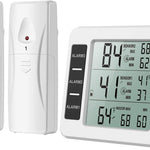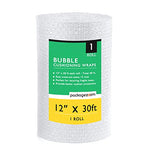You have no items in your shopping cart.
When it comes to measurements, we often encounter the terms "mil" and "mic" in various contexts. But what exactly do these terms mean, and how are they different from each other? In this article, we will explore the nuances of mil and mic measurements, their applications, and the distinctions that set them apart. So, let's dive in and unravel the mystery behind mil vs mic!
Mil: A Unit of Measurement
What is a Mil?
A mil, short for "thousandth of an inch," is a unit of measurement commonly used in the manufacturing and construction industries. It represents a precise measurement equal to one-thousandth of an inch or 0.001 inches. The term "mil" is derived from the Latin word "mille," meaning "thousand."
Applications of Mil
Mil measurements find widespread application in various industries, including:
-
Plastic Manufacturing: Mil measurements are crucial in determining the thickness of plastic films, sheets, and packaging materials.
-
Paper Industry: Mil measurements are used to gauge the thickness of paper, cardboard, and other paper-based products.
-
Paint and Coatings: Mil measurements are utilized to specify the thickness of paint and protective coatings applied to surfaces.
-
Electronics: In the electronics industry, mil measurements are employed to determine the thickness of circuit boards and other electronic components.
Mic: A Unit of Measurement
What is a Mic?
A mic, also known as a micron, is a unit of measurement used to denote small distances or sizes. It represents one-millionth of a meter or 0.000001 meters. The term "mic" is derived from the Greek word "mikrós," meaning "small."
Applications of Mic
Mic measurements are particularly significant in the following areas:
-
Microelectronics: Mic measurements play a vital role in determining the size and dimensions of microelectronic components, such as transistors and integrated circuits.
-
Nanotechnology: In the field of nanotechnology, mic measurements help quantify the size and characteristics of nanoparticles and nanoscale structures.
-
Optics: Mic measurements are used to specify the dimensions of optical components, such as lenses and fibers, which require high precision.
-
Medical Science: In medical research and diagnostics, mic measurements are employed to evaluate cell sizes, microorganisms, and microscopic features.
FAQs about Mil vs Mic
Q1: Can mil and mic measurements be used interchangeably?
No, mil and mic measurements cannot be used interchangeably. They represent distinct units of measurement with different scales. While a mil is one-thousandth of an inch, a mic is one-millionth of a meter.
Q2: Are mil and mic measurements used in the same industries?
Although mil and mic measurements are used in some overlapping industries, their specific applications differ. Mil measurements are primarily employed in manufacturing, construction, and coatings, while mic measurements find more extensive use in microelectronics, optics, and nanotechnology.
Q3: How can I convert mil to mic and vice versa?
To convert mil to mic, multiply the measurement in mil by 25.4. Conversely, to convert mic to mil, divide the measurement in mic by 25.4.
Q4: Is there any relationship between mil and millimeter?
No, there is no direct relationship between mil and millimeter. A millimeter is equal to one-thousandth of a meter, whereas a mil is one-thousandth of an inch.
Q5: Are there other units of measurement similar to mil and mic?
Yes, there are other units of measurement related to mil and mic. For instance, a thousandth of a millimeter is known as a "micromillimeter" or "millimicron," denoted as mmµ or mmμ.
Q6: Are mil and mic measurements commonly used worldwide?
Mil measurements are predominantly used in the United States, while mic measurements are more commonly employed internationally, particularly in countries following the metric system.
Conclusion
In summary, the distinction between mil and mic measurements lies in their scale and applications. Mil represents one-thousandth of an inch and is utilized primarily in the manufacturing and construction industries. On the other hand, mic denotes one-millionth of a meter and finds extensive application in microelectronics, optics, and nanotechnology. Understanding the differences between mil and mic is crucial for accurate measurements and effective communication across various industries. So, whether you're working with plastics, electronics, or nanoscale materials, knowing the right unit to use will ensure precision and consistency in your measurements.








